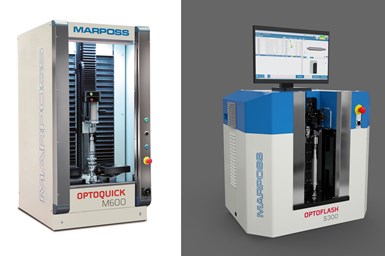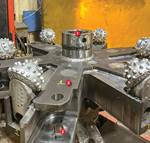Marposs Updates Optical Testing System Software
Marposs has updated its software for Optoquick and Optoflash with a smart-search function for viewing results, as well as a user-friendly interface.

Marposs has updated the software within its Optoquick and Optoflash optical technology testing systems. The updated software promotes user-friendliness with an optimized interface, helping users utilize and configure new measurements, while a smart-search function archives all measurements for retrieval.
Optoquick is an optical and contact gauging solution that Marposs says is suited for high-precision gauging controls on cam, crank, gear and drive shafts. The company says it provides a fast and precise quality control solution directly next to the machine tool on the manufacturing floor, speeding up work-in-progress operations and eliminating time wasted in moving parts across the shop floor. Optoquick is available in five different models based upon part size.
The company’s Optoflash is a precision measuring solution based on 2D optical technology, and the device provides fast and extensive quality control of small-size shafts and fasteners. Optoflash features an industrial-grade architecture which Marposs says makes it well-suited for both laboratory and production environments. The company says Optoflash’s four currently available models best suit the precision mechanical device and medical industries.
Related Content
-
Determining Out-of-Roundness at the Point of Manufacture
George Schuetz, Mahr Inc.’s Director of Precision Gages, offers these techniques for measuring roundness on the shop floor.
-
A Case for Combining Workholding with Optical Scanning
Automotive dies and die inserts are often complex, one-off parts with little room for error. Integrity Tool's investments in modular workholding tools and 3D optical scanning have allowed the company to create niche capabilities for its CNC machined parts.
-
Choosing the Correct Gage Type for Groove Inspection
Grooves play a critical functional role for seal rings and retainer rings, so good gaging practices are a must.











.png;maxWidth=300;quality=90)

